We all ended up liking some kind of music, but for petrolheads it can be a tricky choice when that same music is produced by engines of different architectures.
One thing is certain: the Small Block V8 Chevy's have been singing for 60 years and will continue to sing, with the latest ZZ6 being the last hoarse, bubbling scream in a long lineage.
But before we go to the origins, we have to leave you some considerations, so that you can understand exactly the difference between V8 “Big Block” and V8 “Small Block” , or “Big Block” and “Small Block”.
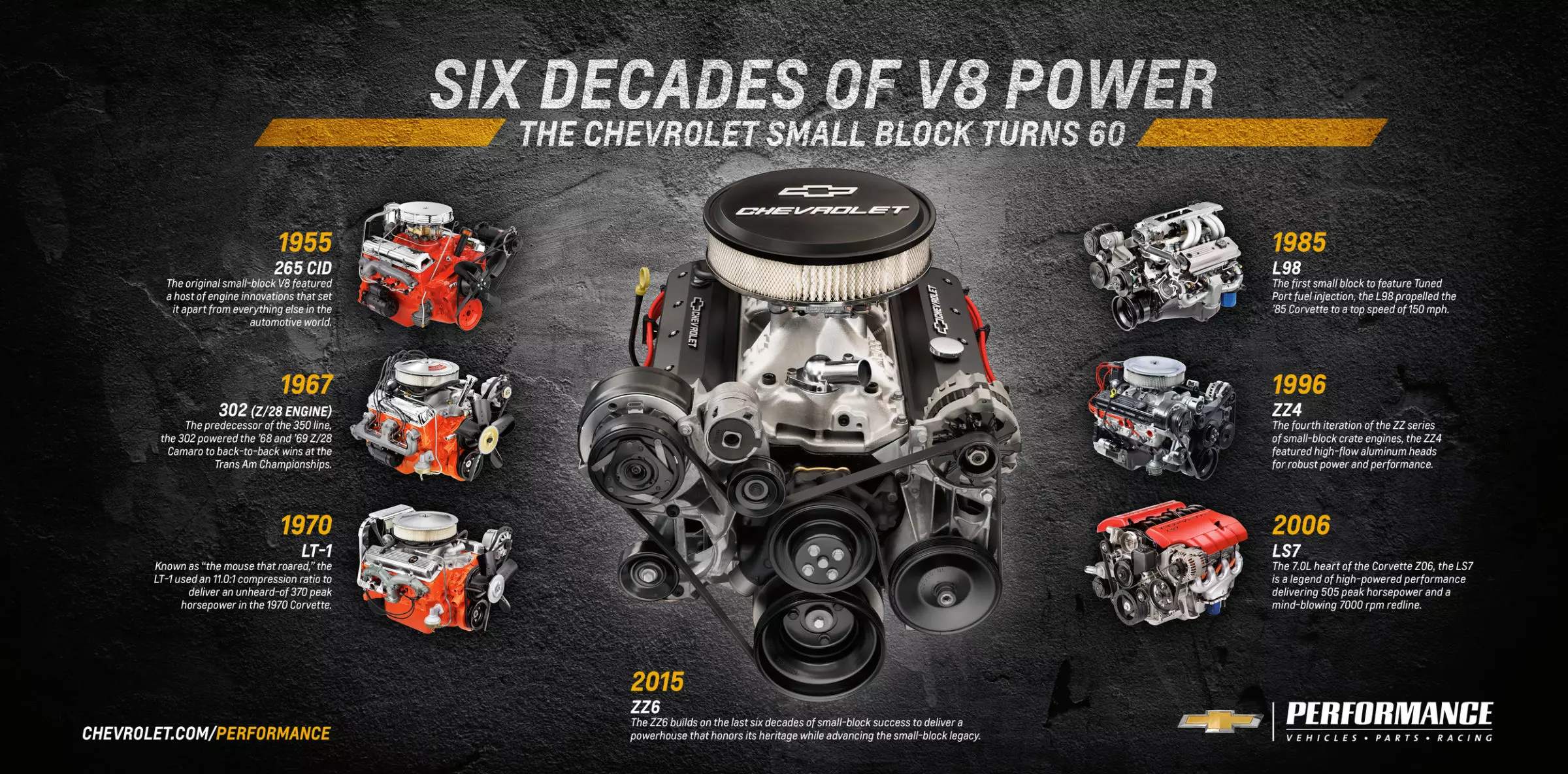
How was Small Block born and what are the differences?
Before the appearance of the first Small Block V8, in 1955, the V8 offer of most American builders was made by the Big Blocks. We don't want to widen it too much, but the big differences are the most notable ones: big blocks are physically larger than small blocks both in height and width, which doesn't mean they have more displacement, in fact it is possible to have the same displacement with the two blocks.
Large blocks have longer connecting rods, favoring the stroke of the pistons, thereby producing more torque, but being less capable of high rotations, and the metal thickness between the cylinder walls is also greater. On the other hand, the heads between these blocks have different architectures, both in the angles of the valves and in the different cooling and lubrication channels. As in the blocks themselves, in the case of the lubrication channels, in addition to the size, the blocks themselves also have different angles both in the V-opening and in the angles and spacing of the solid/hydraulic impellers that move the valve stems located at the head.
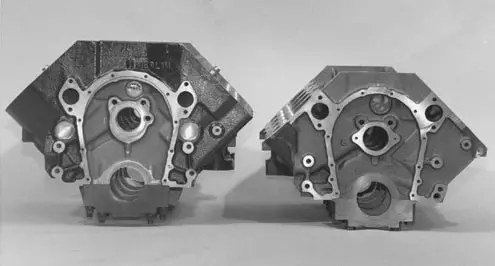
Chevy engineers knew that Big Blocks had their place reserved for larger vehicles and so there was a need to create something lighter, with the same strength, but capable of producing more power at much higher revs, thus being born the Small Block.
It was then in 1955 that Chevy's first Small Block was born, the 265 (referring to its capacity in cubic inches), a small 4.3 l V8 with power from 162 hp to 180 hp, with pushrod architecture and OHV (overhead valve). It was ideal to replace equivalent displacements but in blocks of six inline cylinders, which had very little sporty vein and were more focused on fuel economy.
followed the block 283 4.6 l, this V8 would be responsible for energizing Chevy's sporty vein, and the first to factory-assemble a Rochester mechanical injection system — this revolutionary system achieved 1 hp per cubic inch.
The legendary 327 it was an evolution of the already famous Small Block 265. This 5.3 l V8 would make history in its L-84 variant, which would come to equip the Corvette C2 Stingray. Once again the evolution of mechanical injection by Rochester, would lead the L-84 block to debit 1,146 hp per cubic inch, a record only broken in 2001 with the 3rd generation of the LS6.
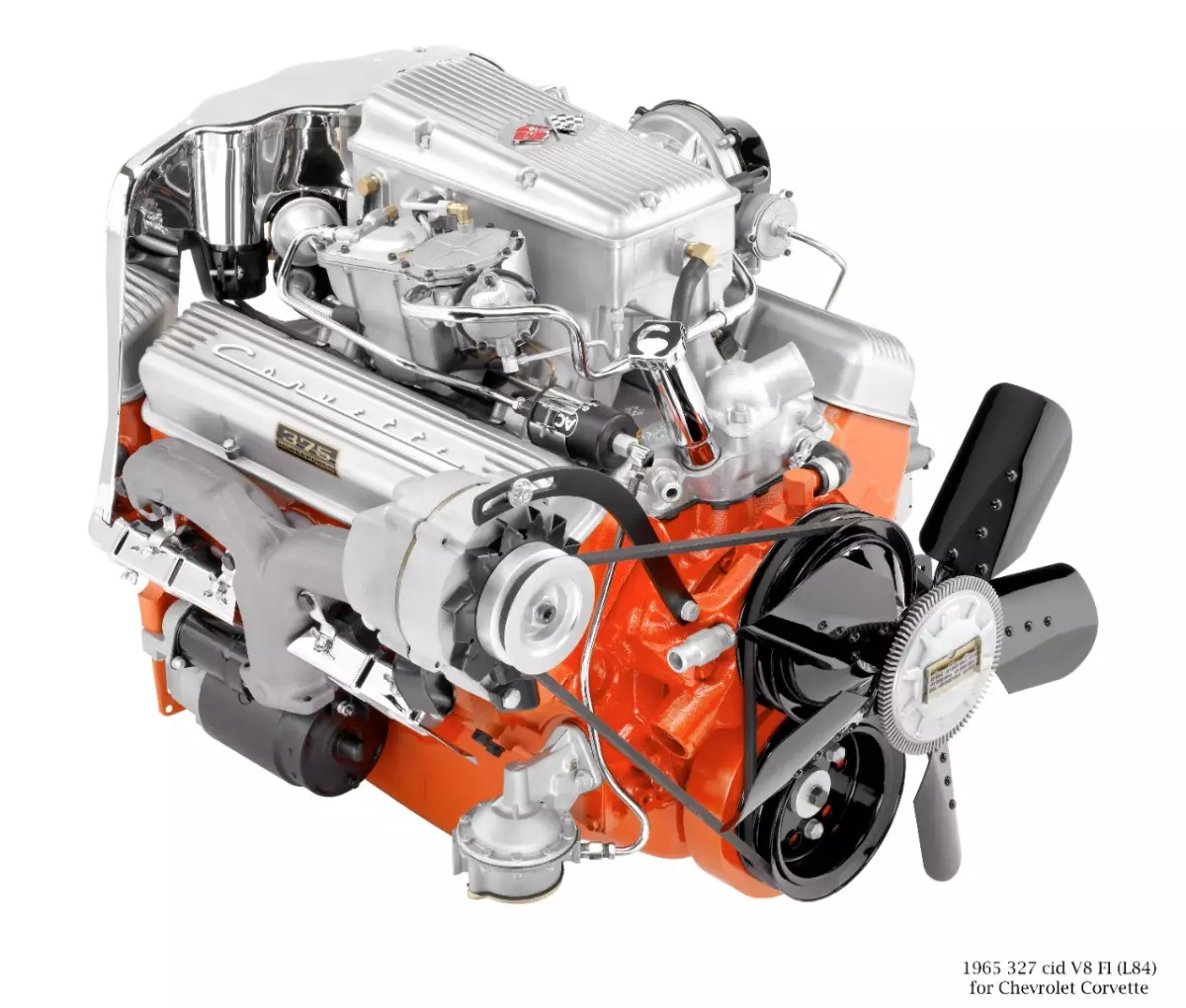
We pass to the also mythical Small Block 302 , this 5.0 l V8 would mark a generation, as the roots of its design come directly from the restrictions of the Trans Am competition, by SCCA (Sports Car Club of America), where blocks larger than 305 cubic inches were not allowed. In the golden age of this competition, the rivalry between the Camaro Z/28 and the Mustang Boss 302 was disputed turn-by-turn and in the straights, the 290 hp that many claimed was actually very close to 350, were the delight of the pilots. aboard the 1969 Camaro Z/28.
The oil crisis and technological advance as a solution
In the 70s, the oil crisis and the Smog era (atmospheric pollution generated by car emissions, characterized by a fog composed of polluting gases), could have killed Chevy's Small Block, but that was not the case. Chevrolet engineers were given the Herculean task of getting the 5.7-liter 350 block, the LT1, able to meet environmental standards while having a more measured appetite. Still its 360 hp shone. However, with the death of Muscle Cars, pure American muscle would experience a dark decade of powers, materialized in the L-82. This Small Block 350 already had only 200 hp, making the Corvette a car with modest benefits.
Times have changed and engineering has evolved, that's when the Small Block 350 L-98 . the electronic injection would make it possible to recover some of the performance that the Corvette and Camaro had lost during the Smog era. The power was not brilliant, only between 15 and 50 hp had been gained, but it was more than enough for the Corvette to timidly surpass 240 km/h in 1985.
Alongside the Factory Small Blocks, the GM Performance division has always offered solutions for the various projects that a GM Fan needed. THE ZZ4 , being the 4th of a generation of high performance Small Block 350, it would be the state of the art in 1996 for this mythical 5.7 l displacement for Chevrolet.
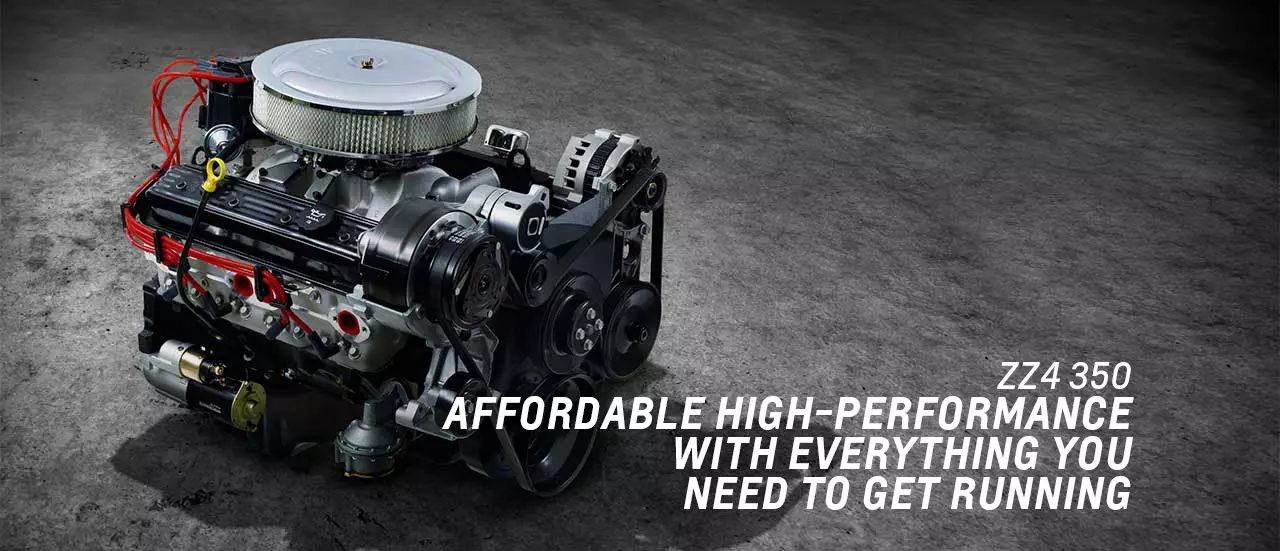
Next chapter: the LS
Chevrolet's lineage of LS-generation Small Blocks began in 1997. You've probably heard of them, whether it's their performance, affordability, or the ease with which swaps are made given their extremely compact dimensions. From the symbolic 5.7 l LS1/LS6 to the giant 7.0 l LS7, the LS blocks have forever marked a generation that yearned for power, reliability and moderate consumption, at a lower cost than the competition.
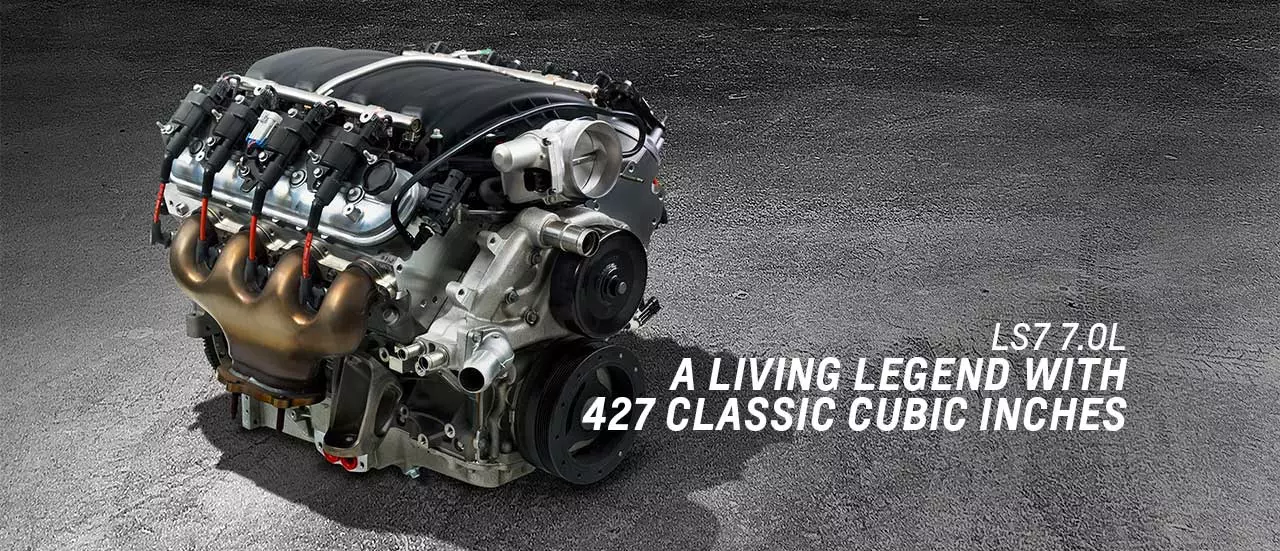
For fanatics of old school power, GM Performance still offers, in the mythical cylinder capacity of 7.4 l, the LSX-R 454 block. In 1970 the mythical 454 LS6 was a V8 Big Block that equipped the Chevelle SS, with a power of 450 hp. Today it is possible to extract in an N/A (naturally aspirated) way from the LSX-R more than 600 hp.
ZZ6, the latest
We finished the tour through Chevrolet's Small Blocks with the latest engine coming from GM Performance, the new ZZ6 . Of course, tradition is continuing with this 5.7 l V8 Small Block, and to celebrate these 60 years, this ZZ6 is in addition to being the most powerful 5.7 l ever — 405 hp and 549 Nm extracted from an old-fashioned quad body carb — this 100% analog power relies on specially crafted LS V8 heads. The objective was to increase the speed of the air flow, with a more aggressive camshaft but respecting the pushrod-type camshaft, a set of reworked valves, forged crankshaft and pistons in aluminum with high silicon content.
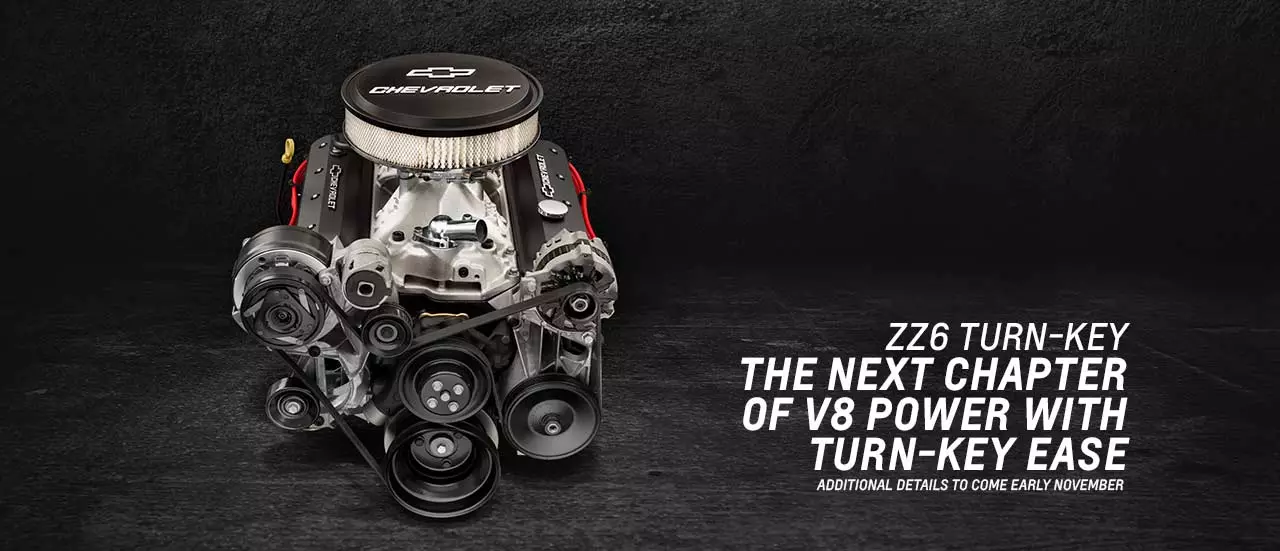
Although the LS generation will give way to the LT, it is through engineering like this that we wish another 60 years of Small Blocks V8 with which Chevrolet won us over. “Old School” or contemporary, LONG LIFE TO V8.
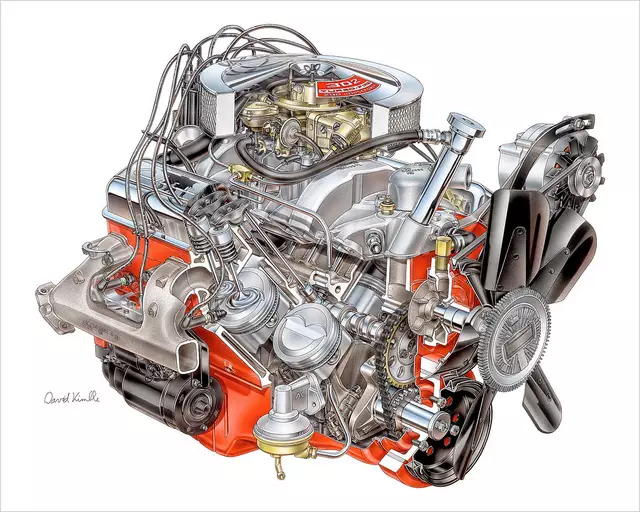
Chevy Small Block 302
